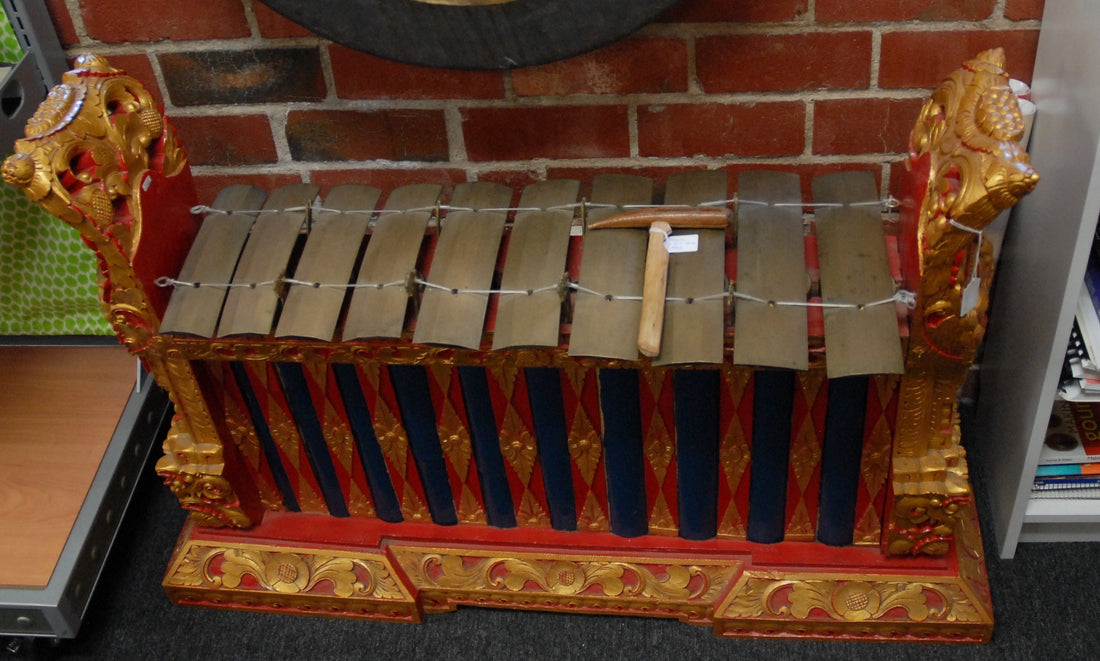The gamelan predates the Hindu-Buddhist culture that dominated Indonesia in its earliest records and thus represents an indigenous art form. The instruments developed into their current form during the Majapahit Empire. In contrast to the heavy Indian influence in other art forms, the only obvious Indian influence in gamelan music is in the Javanese style of singing, and in the themes of the Wayang kulit (shadow puppet plays).
In Javanese mythology, the gamelan was created by Sang Hyang Guru in Saka era 167, the god who ruled as king of all Java from a palace on the Maendra mountain in Medang Kamulan. He needed a signal to summon the gods and thus invented the gong. For more complex messages, he invented two other gongs, thus forming the original gamelan set.

